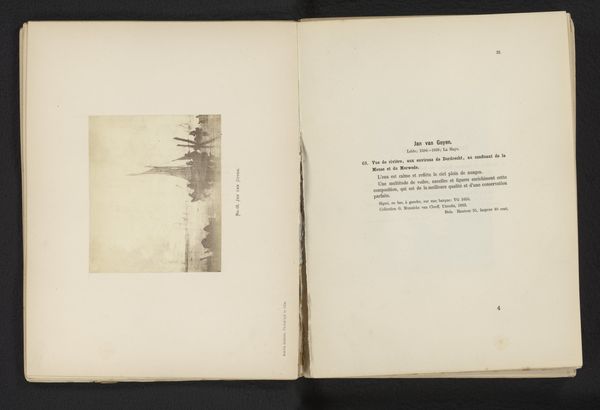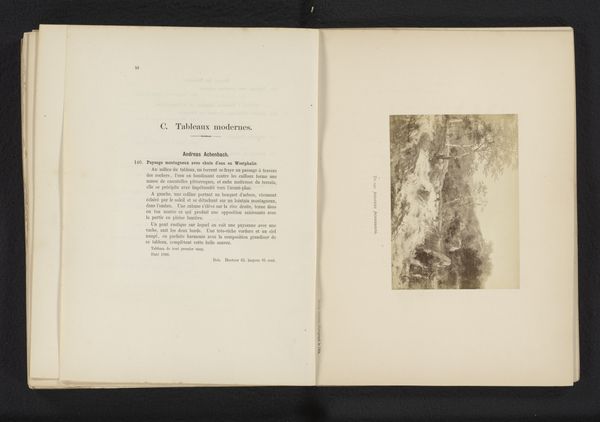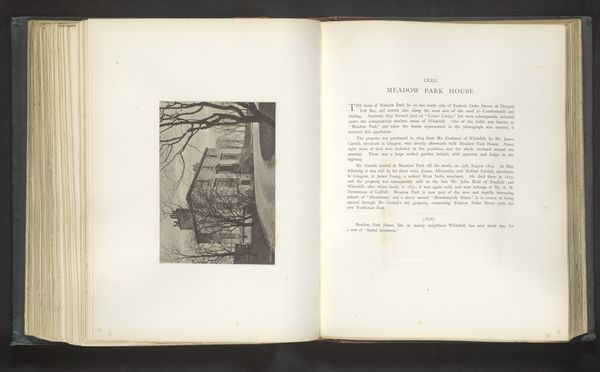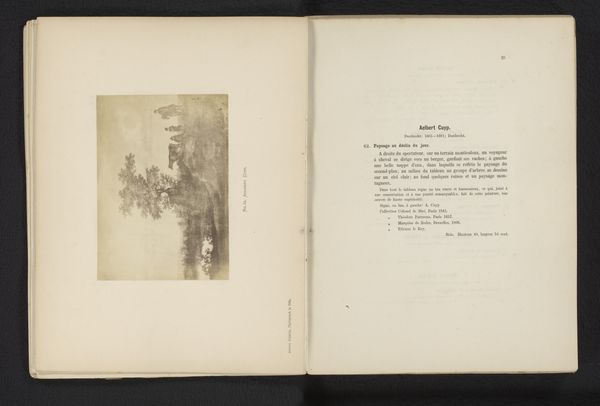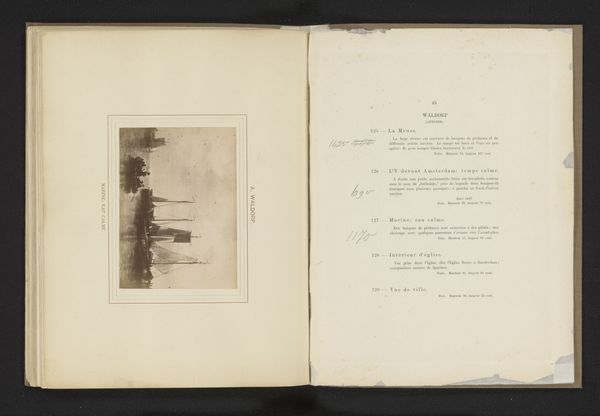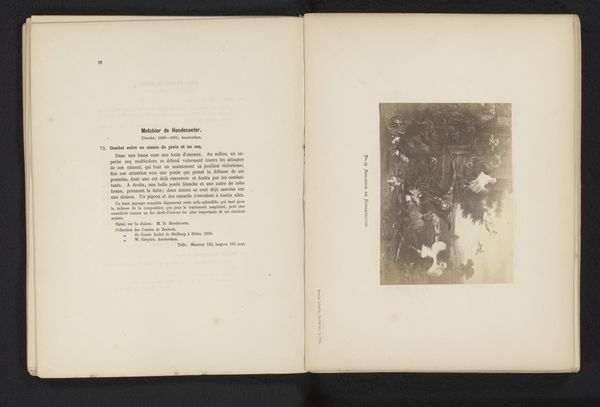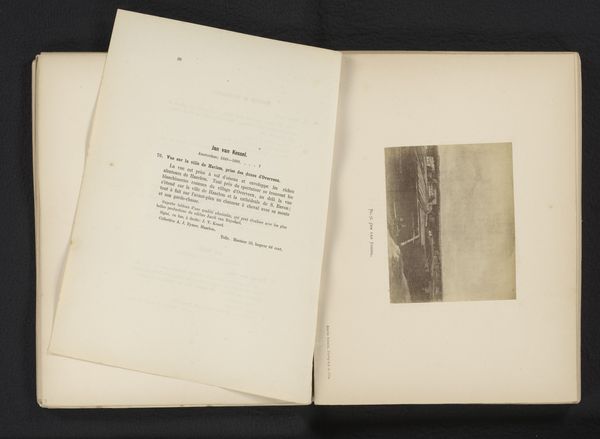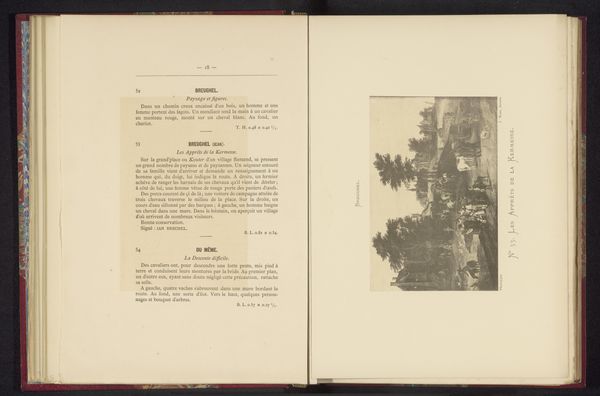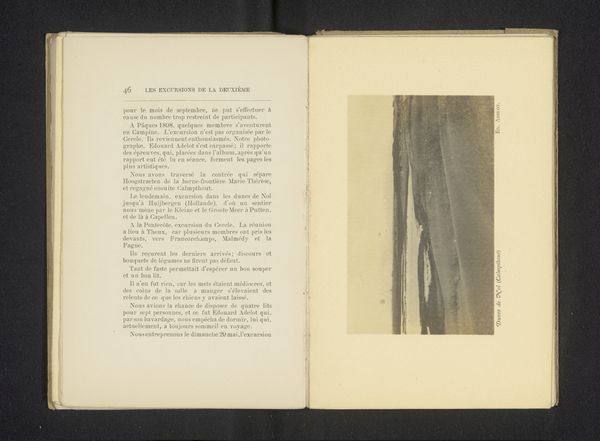
print, photography
#
script typeface
#
aged paper
#
dutch-golden-age
#
paperlike
# print
#
sketch book
#
landscape
#
photography
#
personal sketchbook
#
hand-drawn typeface
#
thick font
#
handwritten font
#
thin font
#
historical font
Dimensions: height 96 mm, width 149 mm
Copyright: Rijks Museum: Open Domain
This is a photogravure made by Anselm Schmitz, dating back to the late 19th century. It reproduces a painting of a moonlit landscape. The photogravure process itself is interesting from a social and institutional point of view. As a method of reproducing images, it was part of a broader shift in the art world towards mass production and dissemination of artworks. This had implications for how art was consumed and understood by the public. Photogravures like this one made art more accessible to a wider audience, breaking down traditional barriers based on wealth and privilege. But in what ways did these reproductions influence the art world? Did they democratize art, or did they simply create a new hierarchy of value, with original artworks still prized above all else? These are questions that art historians continue to debate, drawing on a range of sources such as exhibition catalogues, artists' letters, and critical reviews.
Comments
No comments
Be the first to comment and join the conversation on the ultimate creative platform.

